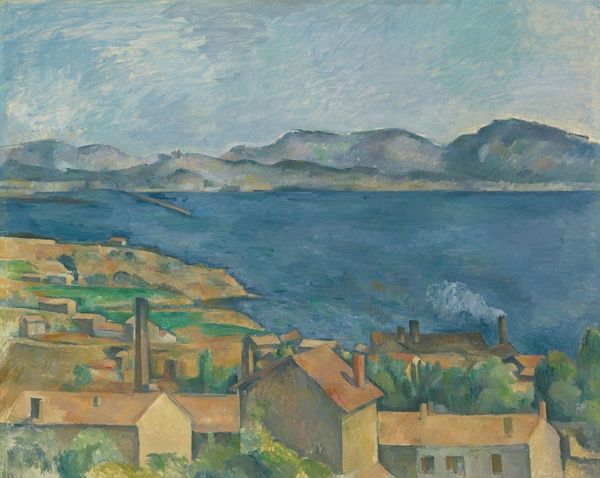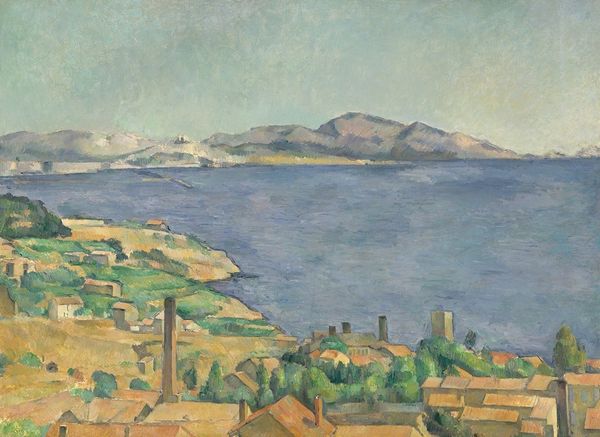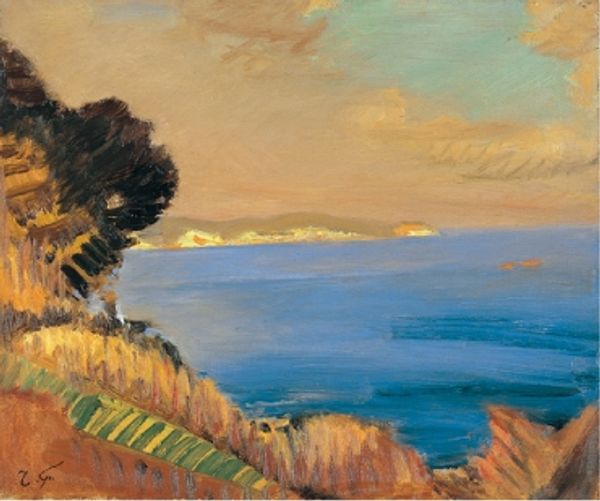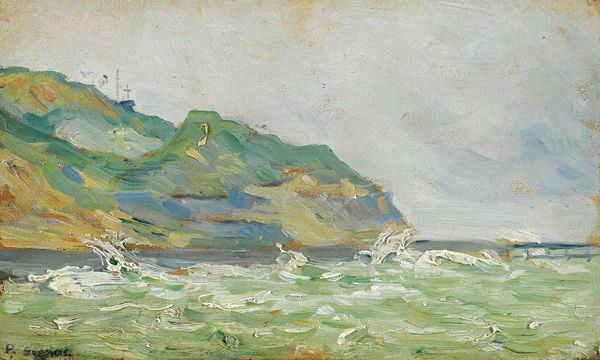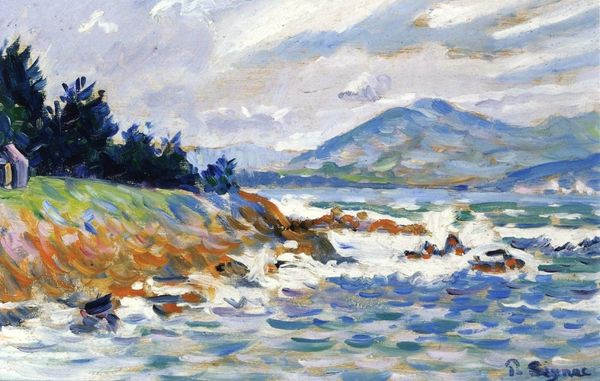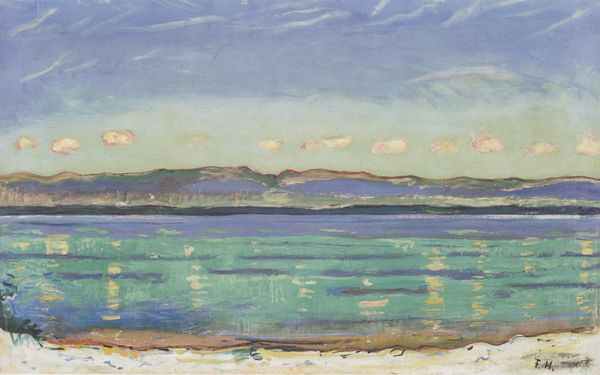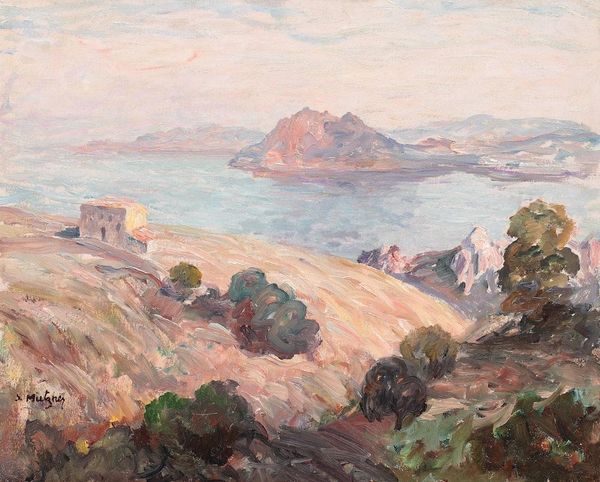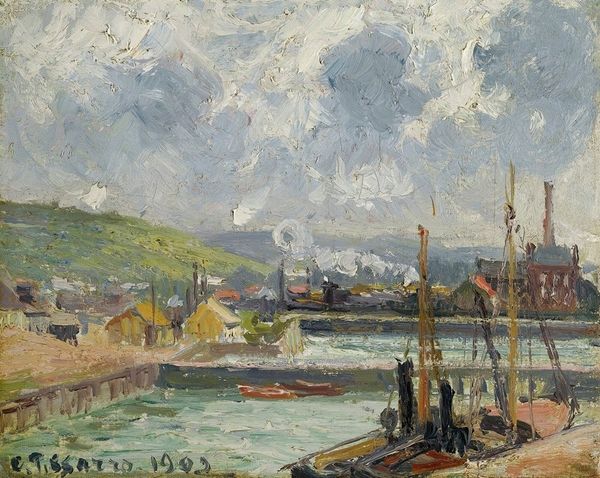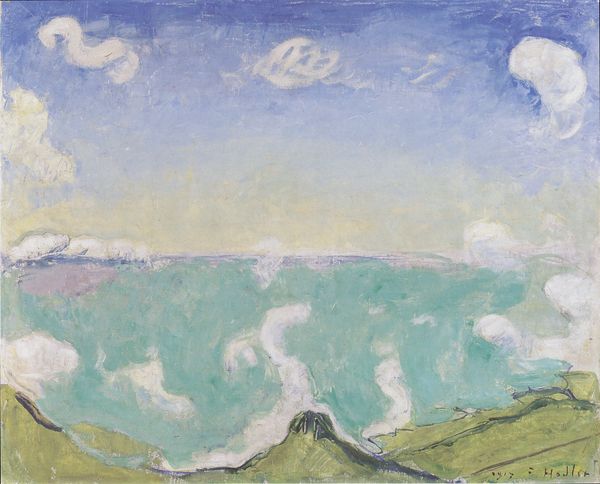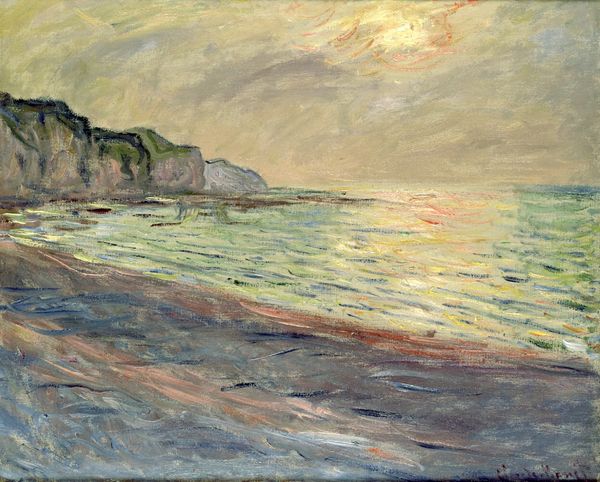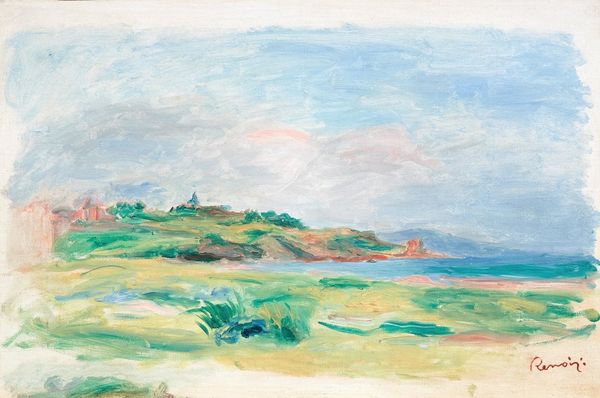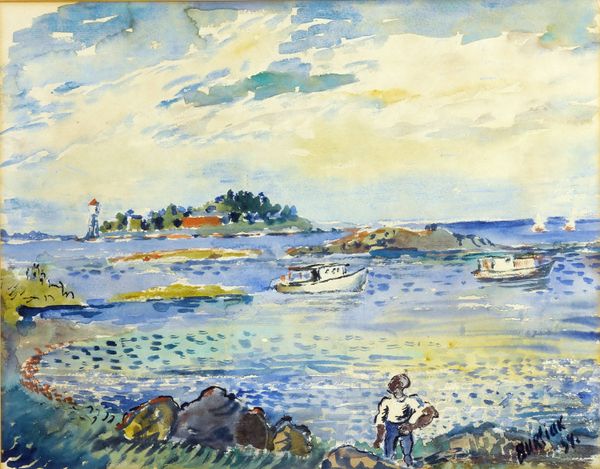
painting, plein-air, oil-paint
#
painting
#
impressionism
#
plein-air
#
oil-paint
#
landscape
#
impressionist landscape
#
handmade artwork painting
#
oil painting
#
seascape
Dimensions: 54 x 73 cm
Copyright: Alexis Gritchenko,Fair Use
Curator: Alexis Gritchenko's "Equinoxe à La Ciotat" captures a seascape scene in thick, gestural strokes of oil paint. What strikes you first about this piece? Editor: It feels raw, almost unfinished. The sky is brooding, mirroring the churning water, creating this tension between the solid land and the chaotic sea. There's a loneliness to it. Curator: Gritchenko, deeply influenced by Impressionism and plein-air painting, often worked directly in nature. I see his attempt here to capture a specific moment, a fleeting feeling—the very instant of the equinox's atmospheric shift in the south of France. Editor: The symbolism of the equinox is compelling here. It represents balance, the intersection of light and darkness. You see it in the way Gritchenko plays with the contrast between the shadowy coastline and the somewhat brighter, turbulent water. Is that balance precarious? Curator: He was painting during a period of great social upheaval in Europe; his work reflected and influenced movements rooted in questioning established norms. You could say this reflects a cultural "equinox" where old certainties were giving way to new, uncertain forces. This place, this town on the Mediterranean Coast was already becoming known as an outpost and escape for people looking for social change. Editor: So, a meeting place and inspiration for marginalized communities seeking social equity and freedom? I keep coming back to the ocean as a dominant element. Seascapes carry deep cultural weight: voyages, journeys of self-discovery, dangerous crossings… Curator: Exactly! The ocean as a symbol of both promise and peril—migration and opportunity. It reminds me of feminist theory around fluid boundaries and unstable identity; here it challenges our traditional view. It invites one to step into a perspective on how identity becomes formed along coastlines both physical and cultural. Editor: This resonates strongly. Gritchenko offers a visual language loaded with historical and contemporary resonance—the coastline becomes a stage for shifting perspectives on culture, on identity and, by extension, on the political and social structures we often take for granted. It provides access to how identity is constructed around transient geographical locations. Curator: A fascinating connection. Gritchenko, with his gestural brushstrokes, lets us feel that cultural and atmospheric tension; one perhaps that's always present in coastal areas. Editor: Absolutely, and it invites me to reflect how that might still influence contemporary art concerned with geopolitics and displacement today. I think the viewer is compelled to reflect in front of it.
Comments
No comments
Be the first to comment and join the conversation on the ultimate creative platform.
